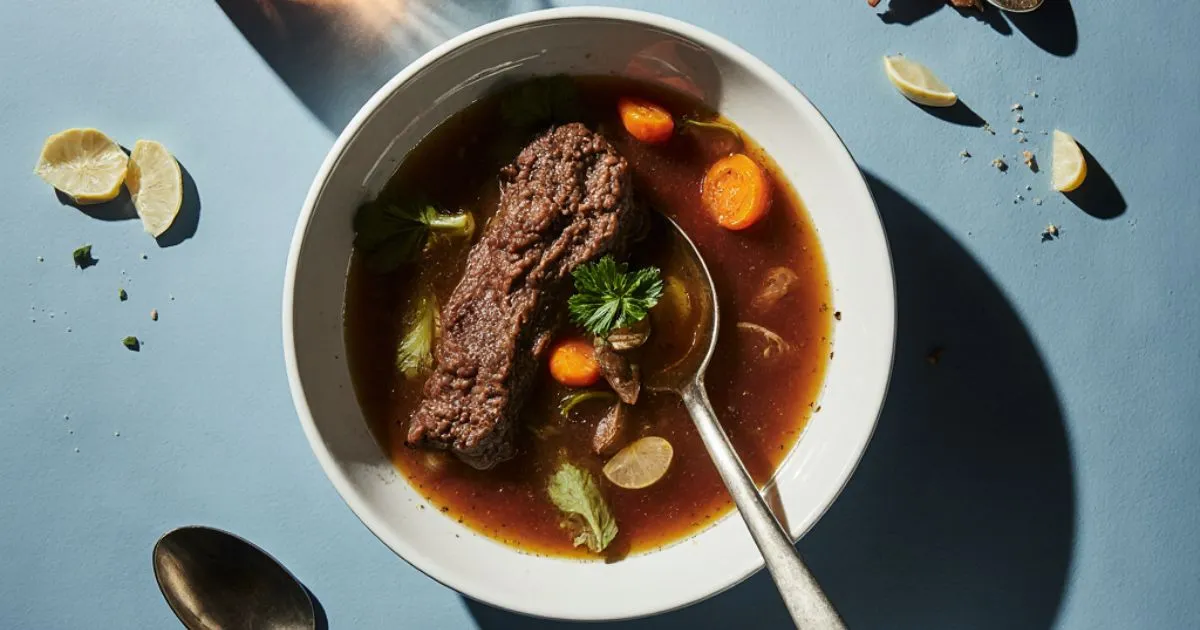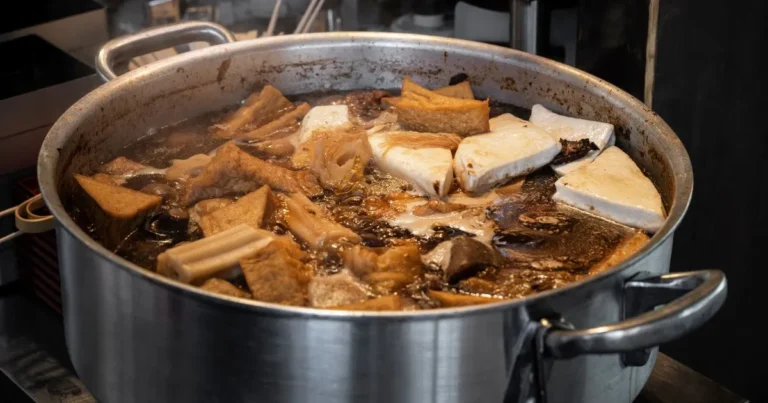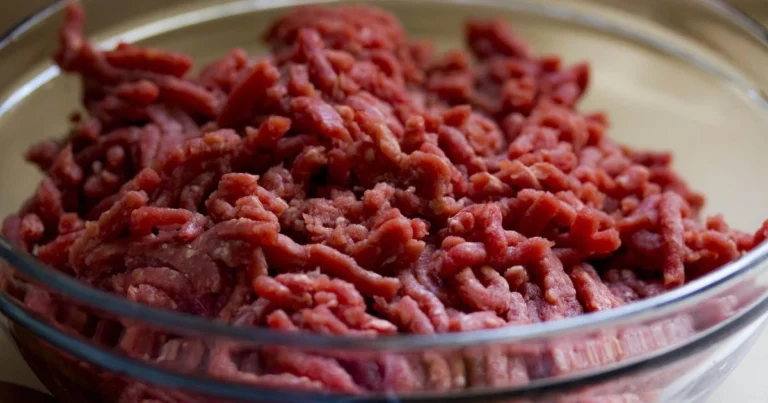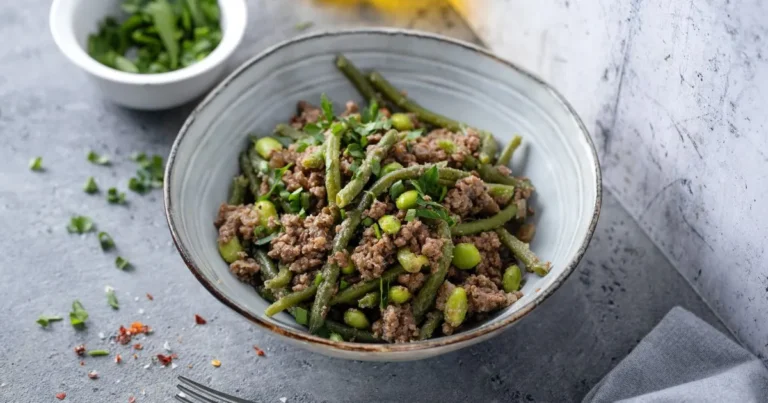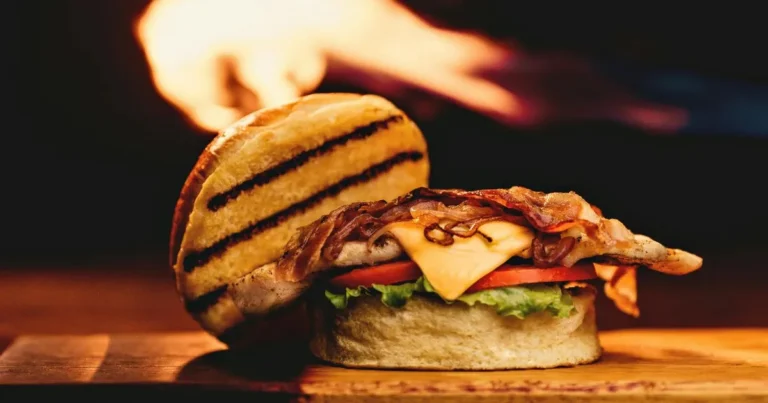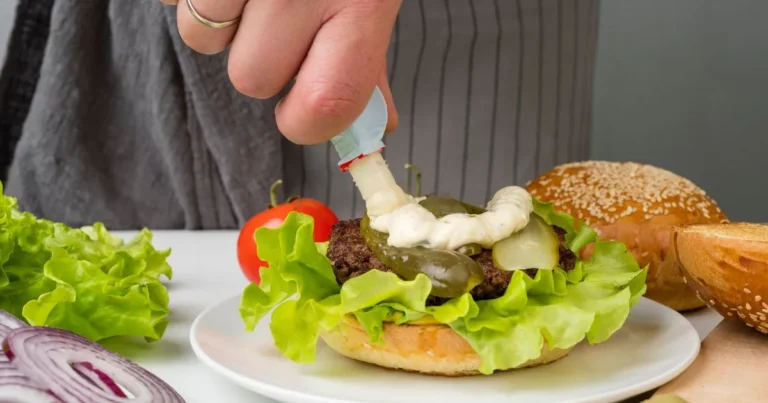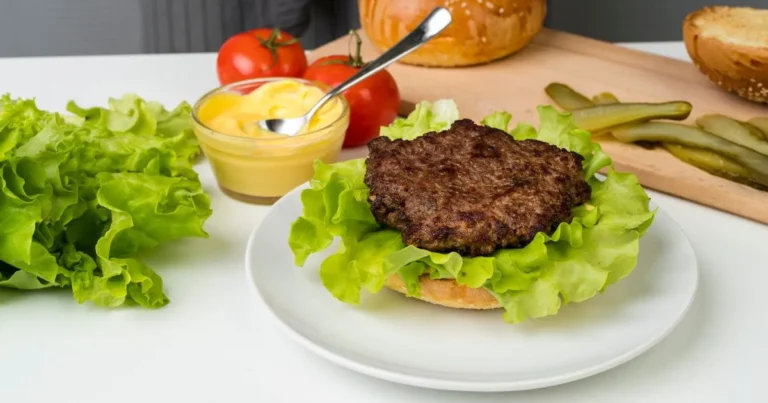Easy Broth Beef Recipe for Rich, Flavorful Meals
Looking to make your meals more savory? Making a homemade broth beef recipe is easy. It adds depth to your dishes. Just a few ingredients and a simple process will get you started.
Homemade broth is not only flavorful but also full of nutrients. It’s great for soups, stews, and sauces. With this recipe, you’ll make bone broth like a pro.
Table of Contents
Key Takeaways
- Homemade broth is rich in nutrients and flavor.
- It’s a versatile ingredient for various dishes.
- Making bone broth is a simple process.
- You can customize the recipe to suit your taste.
- Using homemade broth elevates your cooking.
- It’s a great way to reduce food waste by using leftover bones.
The Magic of Beef Broth in Home Cooking
Homemade beef broth is more than a tasty treat. It’s packed with nutrients that make your meals better. Adding it to your cooking can boost both flavor and health.
Nutritional Benefits of Homemade Beef Broth
Homemade beef broth is full of good stuff like proteins, collagen, and minerals. These come from simmering bones, making the broth tasty and healthy. The collagen, for instance, is great for your skin, hair, and joints.
| Nutrient | Benefit |
| Collagen | Improves skin, hair, and joint health |
| Proteins | Essential for muscle repair and growth |
| Minerals | Supports various bodily functions |
Store-Bought vs. Homemade: Why Make Your Own
Making your own beef broth means no preservatives or additives. You can make it fit your diet perfectly, ensuring it’s healthier and tastier. Plus, it’s easy and won’t break the bank.
Choosing homemade beef broth means better meals without additives. This simple change can make your cooking healthier and more enjoyable.
Essential Ingredients for the Perfect Broth Beef Recipe
To make a truly exceptional broth beef recipe, start with the right ingredients. The quality of your broth depends on the quality of its ingredients.
Selecting the Right Beef Bones
The type of beef bones you choose affects your broth’s flavor and nutrition. A mix of bones is often used for a balanced taste.
Marrow Bones vs. Knuckle Bones vs. Oxtail
Marrow bones add richness, knuckle bones gelatin, and oxtail depth of flavor. Mixing them creates a complex broth.
Where to Source Quality Bones
Find quality bones at local butchers, specialty stores, or online. Experts say using bones from grass-fed cattle boosts your broth’s nutrition.
“The best bones for broth are those that are rich in collagen, such as knuckle and neck bones.”
—Broth Expert
Vegetables and Aromatics That Enhance Flavor
Onions, carrots, celery, and garlic add depth to your broth. Leeks and parsnips can also enhance it.
| Vegetable | Contribution to Flavor |
| Onions | Sweetness and depth |
| Carrots | Sweetness and color |
| Celery | Fresh, herbal note |
Herbs and Spices for Depth
Herbs like thyme and bay leaves, along with spices, add complexity to your bone broth recipe slow cooker or stovetop version. Try different combinations to find your favorite flavor.
- Thyme adds a savory note
- Bay leaves provide a slightly bitter balance
- Peppercorns add a subtle spice
Equipment You’ll Need for Making Bone Broth
To make a delicious beef bone broth, you need the right cooking tools. The type of equipment you choose can greatly affect the taste and quality of your broth. It’s important to know your options.
Stockpot vs. Slow Cooker vs. Pressure Cooker
You have a few choices for cooking your bone broth: stockpots, slow cookers, and pressure cookers. Each has its own benefits.
- Stockpot: Great for traditional cooking, a stockpot lets you make a lot of broth at once.
- Slow Cooker: Ideal for those with busy schedules, a slow cooker cooks your broth over hours without needing to watch it.
- Pressure Cooker: If you’re in a hurry, a pressure cooker cooks your broth much faster. It still gets all the flavors and nutrients from the bones.
A study in the Journal of Food Science found that pressure cooking can cut cooking time by up to 75%. It doesn’t lose any nutritional value.
Additional Tools for Straining and Storage
After cooking, you’ll need to strain your broth to get rid of the solids. A fine-mesh sieve or cheesecloth works best for this.
| Tool | Purpose |
| Fine-mesh sieve | Straining the broth to remove bone fragments and vegetables. |
| Cheesecloth | Further filtering the broth for a clearer consistency. |
| Glass jars or containers | Storage for the cooled broth, suitable for refrigeration or freezing. |
As Bon Appétit points out, “the right tools can make cooking better. They make tasks like straining and storing broth easier.”
Classic Broth Beef Recipe: Step-by-Step Guide
Making a classic broth beef recipe is an art. It requires following steps to get a satisfying and versatile dish. This guide will show you how to prepare your bones and make a clear, rich broth.
Preparing Your Bones (Roasting for Maximum Flavor)
To begin, roast your beef bones in the oven. Roasting caramelizes the bones, adding a deep flavor. Place the bones on a baking sheet and roast at 400°F (200°C) for 30 minutes, or until they’re browned.
Building Your Broth Base
After roasting, start your broth base. Sauté onions, carrots, and celery in oil until soft. Then, add the roasted bones, herbs, and enough water to cover. As Julia Child said,
“The only time to eat diet food is while you’re waiting for the steak to cook.”
This quote shows the richness and satisfaction of a well-made beef broth.
Simmering Techniques for Clear, Rich Broth
Simmering is key for a clear, rich broth. You need to control the temperature and skim the surface often.
Managing Temperature
Simmer your broth just below boiling. This gentle heat extracts flavors without clouding the broth.
Skimming Methods
Skim off foam or fat that rises. This clarifies the broth and improves its texture and flavor.
Bone Broth Recipe Slow Cooker Method
Using a slow cooker is a great way to make delicious bone broth without much effort. You just need to prepare the ingredients, set the cooker, and let it work for you. It’s perfect for those with busy schedules.
Beef Bone Broth Recipe Slow Cooker Instructions
To make beef bone broth in a slow cooker, start by adding your prepared bones, vegetables, and aromatics. Pour in enough water to cover everything, and add herbs and spices if you like. Cook on low for 24 hours or on high for 12 hours.
After cooking, strain the broth through a fine-mesh sieve into a large container. Throw away the solids and let the broth cool. Then, refrigerate or freeze it for later use.
Time-Saving Tips for Busy Home Cooks
Busy home cooks can save time by using two strategies when making bone broth in a slow cooker: overnight cooking and batch cooking.
Overnight Cooking Strategy
Prepare your slow cooker with the bones, vegetables, and water before bed. Set it to cook on low for 8-10 hours. By morning, you’ll have a rich, ready-to-strain broth.
Batch Cooking Approach
Make a large batch of bone broth and portion it out into smaller containers for future meals. This saves time during the week when you’re busy with other tasks.
| Cooking Method | Cooking Time | Result |
| Slow Cooker (Low) | 24 hours | Rich, flavorful broth |
| Slow Cooker (High) | 12 hours | Good for shorter time frames |
| Overnight Cooking | 8-10 hours | Convenient for busy schedules |
Pressure Cooker and Instant Pot Beef Broth Variations
Using a pressure cooker or Instant Pot can speed up making broth. These tools help you create rich, flavorful beef broth faster than traditional methods. They are great for busy cooks or anyone wanting to make broth quickly.
Quick Pressure Cooker Method
The pressure cooker method is perfect for quick broth making. High pressure extracts flavors and nutrients from bones fast. Add beef bones, veggies, and aromatics to the pot. Cook on high pressure for 30-60 minutes for a rich broth.
Chef John says, “The key to a great broth is in the extraction of collagen and other nutrients from the bones, which the pressure cooker does exceptionally well.”
Achieving Slow-Cooked Flavor in Less Time
Pressure cookers and Instant Pots make slow-cooked flavors fast. High pressure breaks down bone tissues, making the broth velvety. Roasting bones before cooking adds extra flavor, like slow-cooked broths.
This way, you can enjoy a delicious broth in under an hour. It’s perfect for weeknights or special occasions.
Troubleshooting Common Beef Broth Problems
Troubleshooting is key for anyone wanting to master their bone broth recipe. Even with careful planning, problems can still occur. This section will cover common issues and their fixes to ensure your broth is always rich and flavorful.
Fixing Cloudy or Greasy Broth
A cloudy or greasy broth can be a letdown. To clear your broth, make sure to skim off excess fat often while it cooks. If it’s still cloudy, try straining it through a fine-mesh sieve or cheesecloth to get rid of impurities.
Adjusting Flavor and Seasoning
If your broth seems lacking, think about adding aromatics like onions, carrots, and celery to boost the flavor. You can also tweak the seasoning with salt, pepper, and herbs to your liking. For an even deeper flavor, roasting your bones before making the broth can really help.
Dealing with Insufficient Gelatin
Gelatin is what makes a beef broth rich. If your broth is lacking gelatin, it might be because of insufficient cooking time or using bones low in collagen. To fix this, simmer your broth for longer or add bones high in collagen, like knuckle or neck bones, to your recipe.
By tackling these common problems, you can greatly enhance your homemade broth’s quality. Whether you’re using a slow cooker or stovetop method, these tips will help.
Storing and Preserving Your Homemade Beef Broth
After making your beef broth, it’s important to store it right. This keeps its taste and nutrients fresh. Proper storage makes sure your broth stays safe and good to eat for a long time.
Refrigeration Methods and Timeline
For a short time, you can keep it in the fridge. Let it cool down first to stop bacteria from growing. Put it in airtight containers and it will last 3 to 5 days.
Freezing Techniques for Long-Term Storage
Freezing is great for keeping it longer. You can freeze it in different ways:
- Use airtight containers or freezer bags for big amounts.
- Try ice cube trays for easy portions.
- Vacuum sealing helps avoid freezer burn.
Ice Cube Trays for Portion Control
Ice cube trays make it easy to freeze broth in the right size. Just fill the trays, freeze, and then put the cubes in containers or bags.
Vacuum Sealing Options
Vacuum sealing gets rid of air, stopping bacteria and other bad stuff. It’s a top choice for keeping your frozen broth fresh.
Canning Options for Shelf Stability
If you want it to last even longer, canning is a good choice. You need a pressure canner to make sure it’s safe and sealed. Always use tested canning methods to keep it from spoiling.
| Storage Method | Duration | Notes |
| Refrigeration | 3-5 days | Store in airtight containers. |
| Freezing | 3-6 months | Use airtight containers or freezer bags. |
| Canning | 12+ months | Requires a pressure canner. |
Elevating Your Broth: Advanced Techniques and Additions
Now that you’ve learned the basic broth beef recipe, it’s time to get creative. You can try new ingredients and methods to make your broth even better. This will add more flavor and nutrients to your broth.
Asian-Inspired Variations (Pho-Style Broth)
Turn your beef broth into a Pho-style broth with Asian flavors. Add star anise, cinnamon, and cloves for a warm, aromatic taste. You can also add fish sauce or soy sauce for more umami.
For a real Pho experience, serve it with rice noodles, herbs like basil and mint, and bean sprouts.
Adding Wine and Spirits for Complexity
Wine or spirits can make your broth more complex. Use a dry white wine or a strong red wine to deglaze the pan after roasting bones. This captures the caramelized flavors.
Or, add a bit of whiskey or brandy towards the end of simmering. This adds a rich, depthful taste.
Bone Marrow and Collagen Boosters
To make your broth richer in collagen, add bone marrow or collagen-rich ingredients. Roasting bones before simmering helps release these compounds. You can also add gelatin or collagen supplements for better texture and nutrition.
By using these advanced techniques and additions, you can make a more complex and satisfying broth. This will elevate your meals.
Delicious Ways to Use Your Homemade Beef Broth
Homemade beef broth is incredibly versatile. It can be used in many different dishes. Whether you make it in a slow cooker or on the stovetop, it adds a rich flavor to your meals.
Soups and Stews That Showcase Beef Broth
One easy way to use beef broth is in soups and stews. For example, you can make a hearty beef stew with beef, veggies, and potatoes. Or, use it as a base for a clear broth with veggies or add noodles for a cozy meal. Homemade beef broth is perfect for soups.
- Beef and Vegetable Stew
- Clear Beef Broth with Noodles
- French Onion Soup
Using Broth in Sauces and Gravies
Beef broth can also make sauces and gravies better. You can reduce it to make a rich demiglace for roasted meats. Or, use it as a base for gravy with your favorite roast or mashed potatoes. Adding homemade beef broth to your sauces boosts the flavor of your meals.
Unexpected Uses: Braising, Risotto, and More
Beef broth has many unexpected uses. It’s great for braising short ribs or pot roast, making the meat tender. It’s also good for cooking risotto, adding a creamy texture. Plus, you can use it to flavor grains like quinoa or barley.
- Braised Short Ribs
- Beef Broth Risotto
- Flavorful Quinoa or Barley
Conclusion: Mastering the Art of Homemade Beef Broth
Now you know how to make a rich and tasty broth beef recipe. Making homemade beef broth is easy but takes patience. By following this guide, you can make a delicious and healthy broth for many dishes.
Try new things with your broth recipe. Roasting bones can add more flavor, or use a slow cooker for ease. You can also add your favorite herbs and spices to make it your own. Soon, you’ll be making beef bone broth like a pro, enjoying its many health benefits.
Keep getting better by trying different broth recipes. You can add wine or Asian flavors for a twist. Look online for recipes from trusted sources like Epicurious or Bon Appétit. They can help you discover new ways to make beef bone broth.
FAQ
What is the best way to make beef bone broth?
The best way to make beef bone broth is by using a slow cooker or a stockpot. Both methods create a rich and flavorful broth. You can also use a pressure cooker for a quicker version.
How long should I simmer beef bone broth?
For a rich and gelatinous broth, simmer beef bone broth for at least 24 hours. You can simmer it for 12-24 hours in a slow cooker or 6-12 hours on the stovetop.
Can I make beef bone broth in a slow cooker overnight?
Yes, you can make beef bone broth in a slow cooker overnight. Just add the bones, vegetables, and aromatics to the slow cooker. Cook on low for 8-12 hours.
What is the difference between beef broth and beef bone broth?
Beef broth is made by simmering beef and vegetables in water. Beef bone broth is made by simmering beef bones. This releases collagen, gelatin, and other nutrients, making it richer and more nutritious.
How do I store homemade beef bone broth?
You can store homemade beef bone broth in the refrigerator for up to 5 days. Freeze it for up to 6 months. You can also can it for longer storage.
Can I use beef bone broth as a substitute for regular broth in recipes?
Yes, you can use beef bone broth as a substitute for regular broth in most recipes. It adds more depth and richness to your dishes.
How do I clarify cloudy beef bone broth?
To clarify cloudy beef bone broth, skim off any excess fat. Strain it through a fine-mesh sieve. Or add a splash of vinegar to help coagulate the impurities.
Can I add other ingredients to my beef bone broth for extra flavor?
Yes, you can add other ingredients like herbs, spices, wine, or vegetables to your beef bone broth for extra flavor. Experiment with different combinations to find your favorite.

